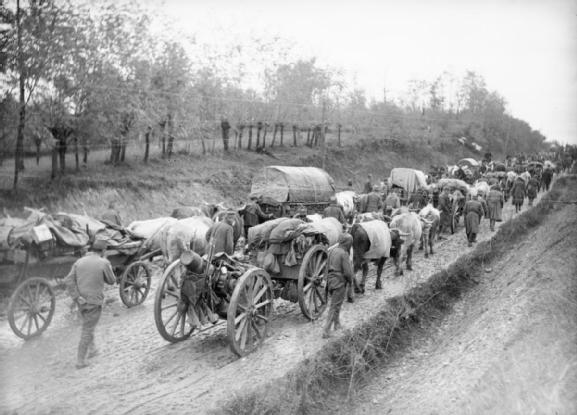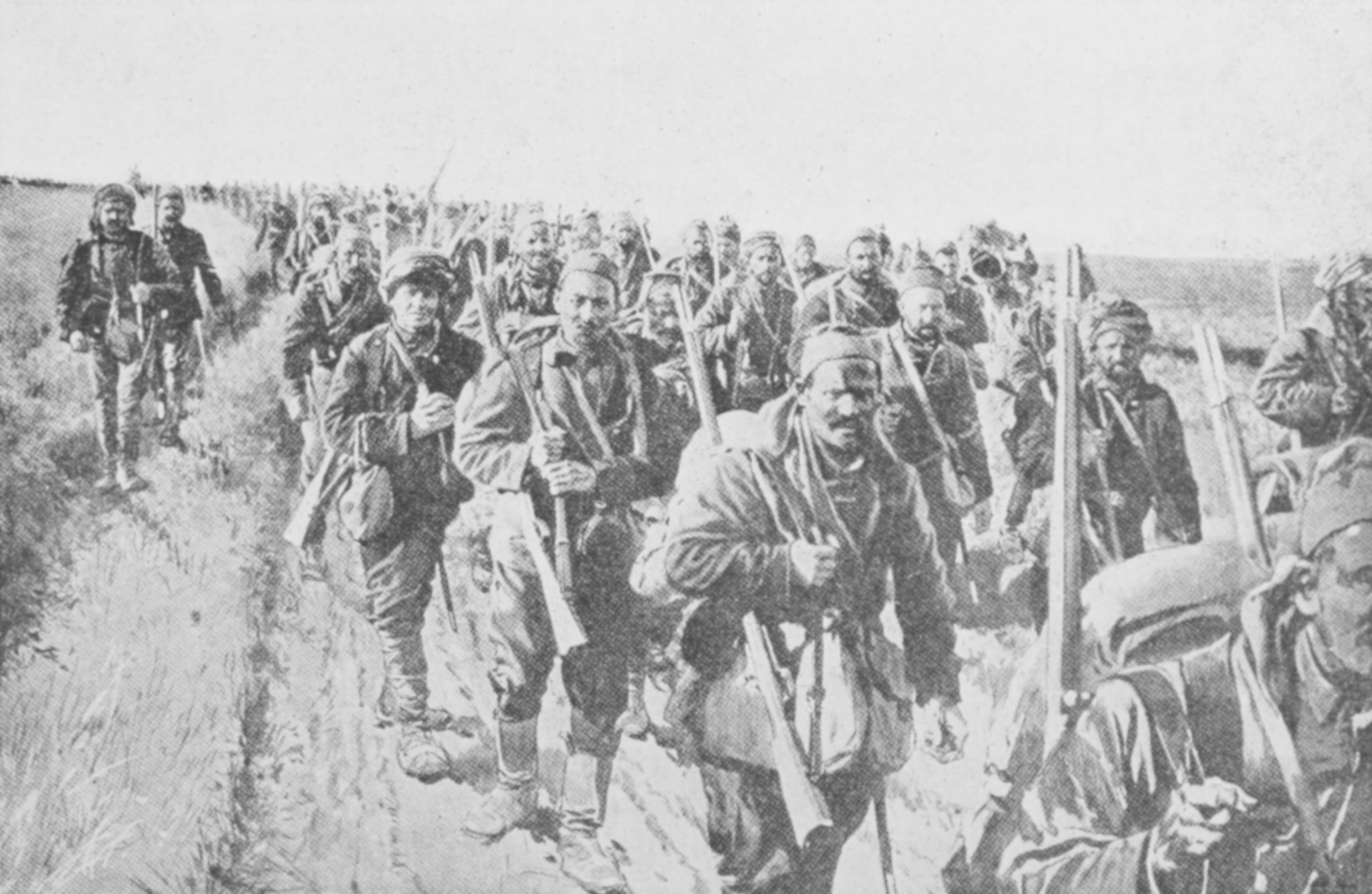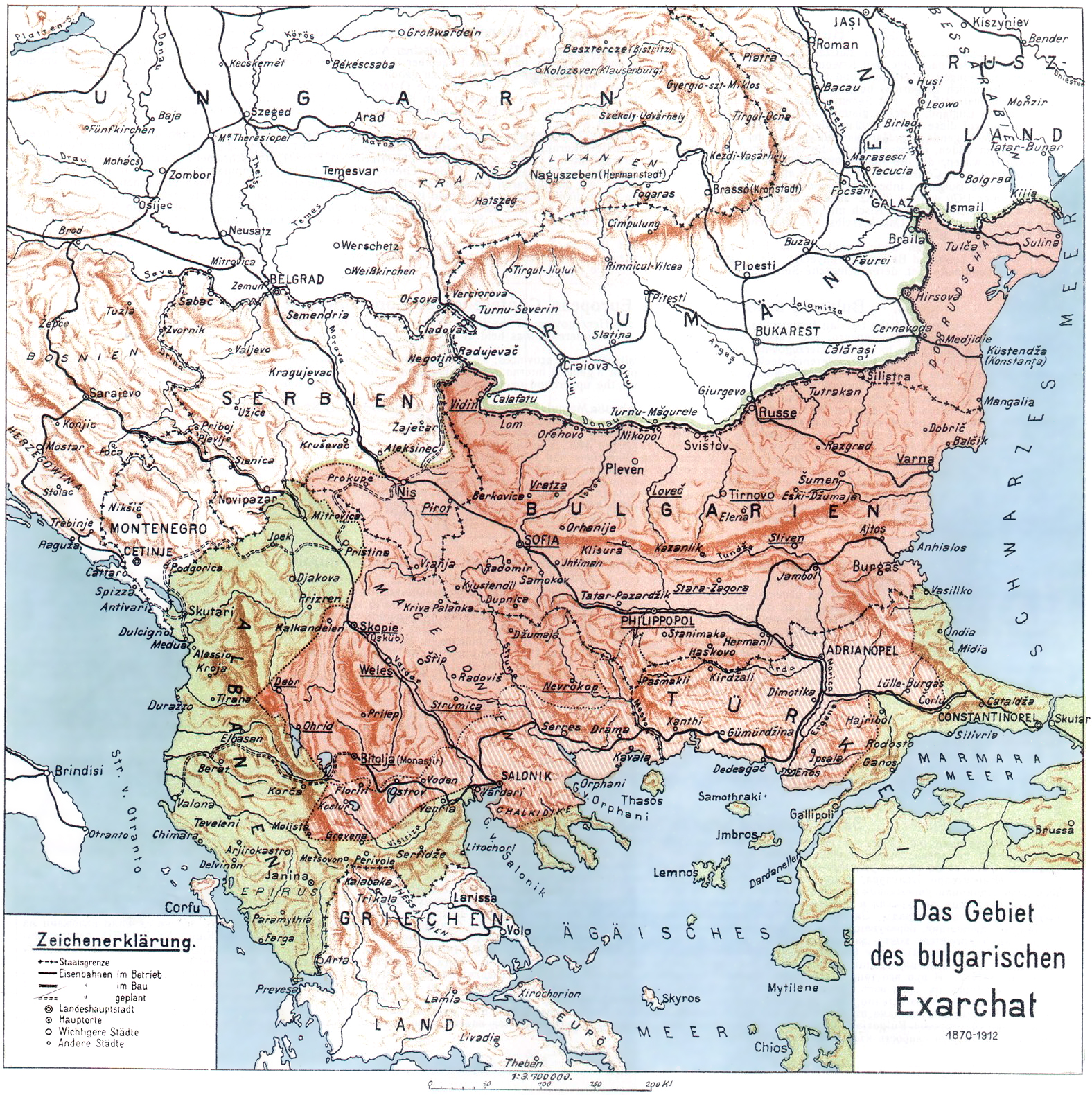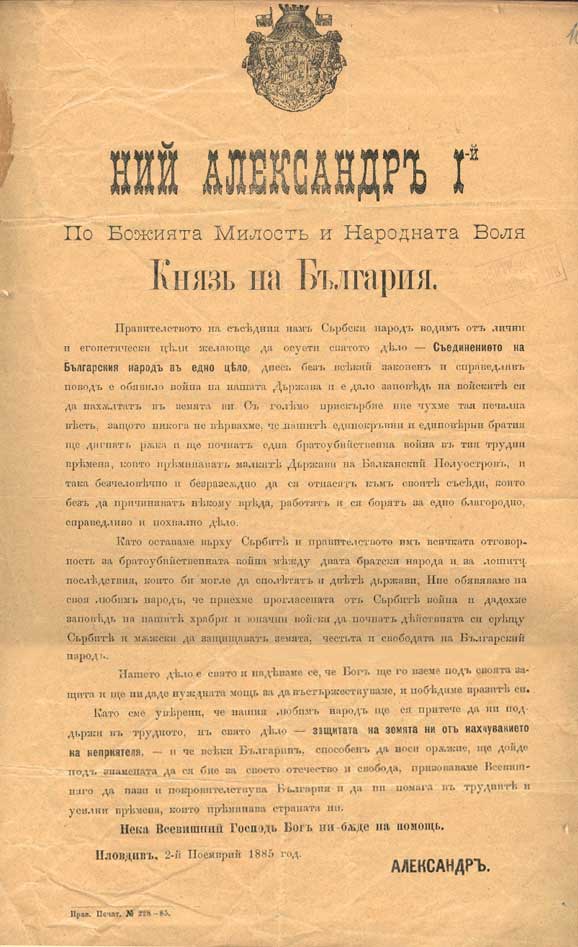|
Battle Of Kosturino
The Battle of Kosturino was a World War I battle, fought between 6 and 12 December 1915. The battle was fought in the initial stage of the Macedonian campaign, in the Balkans Theatre. On 6 December, a Bulgarian troops attacked the French and British-held trenches in Kosturino, at the time part of the Kingdom of Serbia (present day North Macedonia). The offensive was at first held in check, however on 8 December, Bulgaria managed to infiltrate the Memesli ravine. Bulgaria then seized Crete Simonet, thus threatening to outflank the Allies. The Entente defeat at Kosturino led to the complete withdrawal of Allied forces from Serbia, thus enabling the Central Powers to build the Berlin to Constantinople rail line. The Allies in the meantime concentrated on solidifying their defenses in Greece. Prelude The 28 June 1914, assassination of Austro-Hungarian heir presumptive Archduke Franz Ferdinand precipitated Austria-Hungary's declaration of war against Serbia. The conflict quickly a ... [...More Info...] [...Related Items...] OR: [Wikipedia] [Google] [Baidu] |
Balkans Campaign (World War I)
The Balkans theatre, or Balkan campaign was a theatre of World War I fought between the Central Powers (Austria-Hungary, Kingdom of Bulgaria, Bulgaria, German Empire, Germany and the Ottoman Empire) and the Allies of World War I, Allies (Kingdom of Serbia, Serbia, Kingdom of Montenegro, Montenegro, French Third Republic, France, the United Kingdom of Great Britain and Ireland, United Kingdom, Russian Empire, Russia, Kingdom of Italy, Italy and later Kingdom of Greece, Greece). The campaign began in 1914 with three failed Austro-Hungarian Serbian campaign of World War I#1914, offensives into Serbia. A new attempt a year later by the combined forces of Austria-Hungary, Germany and Bulgaria led to the Serbian campaign#1915, conquest and occupation of Serbia and Montenegrin campaign, Montenegro. The Serbian army did not surrender but Great Retreat (Serbian), retreated through the mountains of Albania and was evacuated to Corfu before reforming in Salonika a few months later. On the ... [...More Info...] [...Related Items...] OR: [Wikipedia] [Google] [Baidu] |
Archduke Franz Ferdinand
Archduke Franz Ferdinand Carl Ludwig Joseph Maria of Austria, (18 December 1863 – 28 June 1914) was the heir presumptive to the throne of Austria-Hungary. His assassination in Sarajevo was the most immediate cause of World War I. Franz Ferdinand was the eldest son of Archduke Karl Ludwig of Austria, the younger brother of Emperor Franz Joseph I of Austria. Following the death of Crown Prince Rudolf in 1889 and the death of Karl Ludwig in 1896, Franz Ferdinand became the heir presumptive to the Austro-Hungarian throne. His courtship of Sophie Chotek, a lady-in-waiting, caused conflict within the imperial household, and their morganatic marriage in 1900 was only allowed after he renounced his descendants' rights to the throne. Franz Ferdinand held significant influence over the military, and in 1913 he was appointed inspector general of the Austro-Hungarian armed forces. On 28 June 1914, Franz Ferdinand and his wife were assassinated in Sarajevo by the 19-year-old Gav ... [...More Info...] [...Related Items...] OR: [Wikipedia] [Google] [Baidu] |
August Von Mackensen
Anton Ludwig Friedrich August von Mackensen (born Mackensen; 6 December 1849 – 8 November 1945), ennobled as "von Mackensen" in 1899, was a German field marshal. He commanded successfully during World War I of 1914–1918 and became one of the German Empire's most prominent and competent military leaders. After the armistice of November 1918 the victorious Allies interned Mackensen in Serbia for a year. He retired from the army in 1920; in 1933 Hermann Göring made him a Prussian state councillor. During the Nazi era (1933–1945), Mackensen remained a committed monarchist and sometimes appeared at official functions in his First World War uniform. Senior NSDAP members suspected him of disloyalty to the Third Reich, but nothing was proven against him. Early life Mackensen was born in Haus Leipnitz, near the village of Dahlenberg (today part of Trossin) in the Prussian Province of Saxony, to Ludwig and Marie Louise Mackensen. His father, an administrator of agricultural ente ... [...More Info...] [...Related Items...] OR: [Wikipedia] [Google] [Baidu] |
Battle Of Kolubara
The Battle of Kolubara ( sr-cyr, Колубарска битка, german: Schlacht an der Kolubara) was fought between Austria-Hungary and Kingdom of Serbia, Serbia in November and December 1914, during the Serbian Campaign of World War I. It commenced on 16 November, when the Austro-Hungarians under the command of Oskar Potiorek reached the Kolubara River during their third invasion of Serbia that year, having captured the strategic town of Valjevo and forced the Serbian Army to undertake a series of retreats. The Serbs withdrew from Belgrade on 29–30 November, and the city soon fell under Austro-Hungarian control. On 2 December, the Serbian Army launched a surprise counter-attack all along the front. Valjevo and Užice were retaken by the Serbs on 8 December and the Austro-Hungarians retreated to Belgrade, which 5th Army commander Liborius Ritter von Frank deemed to be untenable. The Austro-Hungarians abandoned the city between 14 and 15 December and retreated back into Aus ... [...More Info...] [...Related Items...] OR: [Wikipedia] [Google] [Baidu] |
Ferdinand Of Bulgaria
, image = Zar Ferdinand Bulgarien.jpg , caption = Ferdinand in 1912 , reign = 5 October 1908 – , coronation = , succession = Tsar of Bulgaria , predecessor = Himself as Prince , successor = Boris III , reign2 = 7 July 1887 – 5 October 1908 , succession2 = Prince of Bulgaria , predecessor2 = Alexander , successor2 = Himself as Tsar , spouse = , issue = , house = Saxe-Coburg and Gotha-Koháry , father = Prince August of Saxe-Coburg and Gotha , mother = Princess Clémentine of Orléans , birth_date = 26 February 1861 , birth_place = Vienna, Austrian Empire , death_date = , death_place = Coburg, Allied-occupied Germany , burial_place = St. Augustin, Coburg , religion = Roman Catholic , signature = BASA-600К-1-1860-1-Ferdinand I of Bulgaria, signature, 1889.jpg Ferdinand ( bg, Фердинанд I; 26 February 1861 – 10 September 1948), Louda, 1981, ''Lines of Success ... [...More Info...] [...Related Items...] OR: [Wikipedia] [Google] [Baidu] |
Greater Bulgaria
Bulgarian irredentism is a term to identify the territory associated with a historical national state and a modern Bulgarian irredentist nationalist movement in the 19th and 20th centuries, which would include most of Macedonia, Thrace and Moesia. History The larger proposed Bulgarian state was suggested under the Treaty of San Stefano in 1878. The issue of irredentism and nationalism gained greater prominence after the Treaty of San Stefano. It established a Principality of Bulgaria, with territory including most of Moesia - the plain between the Danube and the Balkan mountains range (Stara Planina), the regions of Sofia, Pirot, and Vranje in the Morava Valley, Thrace - Northern Thrace, parts of Eastern Thrace, and nearly all of Macedonia. This treaty laid grounds for much of the later claims for a Greater Bulgaria. However, the Treaty of San Stefano was a preliminary one, and the borders of the newly created Bulgaria were established in the Treaty of Berlin. It saw t ... [...More Info...] [...Related Items...] OR: [Wikipedia] [Google] [Baidu] |
Second Balkan War
The Second Balkan War was a conflict which broke out when Bulgaria, dissatisfied with its share of the spoils of the First Balkan War, attacked its former allies, Serbia and Greece, on 16 ( O.S.) / 29 (N.S.) June 1913. Serbian and Greek armies repulsed the Bulgarian offensive and counter-attacked, entering Bulgaria. With Bulgaria also having previously engaged in territorial disputes with Romania and the bulk of Bulgarian forces engaged in the south, the prospect of an easy victory incited Romanian intervention against Bulgaria. The Ottoman Empire also took advantage of the situation to regain some lost territories from the previous war. When Romanian troops approached the capital Sofia, Bulgaria asked for an armistice, resulting in the Treaty of Bucharest, in which Bulgaria had to cede portions of its First Balkan War gains to Serbia, Greece and Romania. In the Treaty of Constantinople, it lost Adrianople to the Ottomans. The political developments and military preparations f ... [...More Info...] [...Related Items...] OR: [Wikipedia] [Google] [Baidu] |
Serbo-Bulgarian War
The Serbo-Bulgarian War or the Serbian–Bulgarian War ( bg, Сръбско-българска война, ''Srăbsko-bălgarska voyna'', sr, Српско-бугарски рат, ''Srpsko-bugarski rat'') was a war between the Kingdom of Serbia and Principality of Bulgaria that erupted on and lasted until . Despite Bulgaria being a vassal state of the Ottoman Empire, the Turks did not intervene in the war. Serbia took the initiative in starting the war but was decisively defeated. Austria demanded Bulgaria stop its invasion, and a truce resulted. Final peace was signed on in Bucharest. The old boundaries were not changed. As a result of the war, European powers acknowledged the act of Unification of Bulgaria which happened on . Background On , Bulgaria and the semi-autonomous Ottoman province of Eastern Rumelia declared their unification in the city of Plovdiv. Eastern Rumelia, whose population was predominantly ethnic Bulgarian, had been an artificial creation of the ... [...More Info...] [...Related Items...] OR: [Wikipedia] [Google] [Baidu] |
Ottoman Empire
The Ottoman Empire, * ; is an archaic version. The definite article forms and were synonymous * and el, Оθωμανική Αυτοκρατορία, Othōmanikē Avtokratoria, label=none * info page on book at Martin Luther University) // CITED: p. 36 (PDF p. 38/338) also known as the Turkish Empire, was an empire that controlled much of Southeast Europe, Western Asia, and Northern Africa between the 14th and early 20th centuries. It was founded at the end of the 13th century in northwestern Anatolia in the town of Söğüt (modern-day Bilecik Province) by the Turkoman tribal leader Osman I. After 1354, the Ottomans crossed into Europe and, with the conquest of the Balkans, the Ottoman beylik was transformed into a transcontinental empire. The Ottomans ended the Byzantine Empire with the conquest of Constantinople in 1453 by Mehmed the Conqueror. Under the reign of Suleiman the Magnificent, the Ottoman Empire marked the peak of its power and prosperity, as well a ... [...More Info...] [...Related Items...] OR: [Wikipedia] [Google] [Baidu] |
Allies Of World War I
The Allies of World War I, Entente Powers, or Allied Powers were a coalition of countries led by France, the United Kingdom, Russia, Italy, Japan, and the United States against the Central Powers of Germany, Austria-Hungary, the Ottoman Empire, Bulgaria, and their colonies during the First World War (1914–1918). By the end of the first decade of the 20th century, the major European powers were divided between the Triple Entente and the Triple Alliance. The Triple Entente was made up of France, Britain, and Russia. The Triple Alliance was originally composed of Germany, Austria–Hungary, and Italy, but Italy remained neutral in 1914. As the war progressed, each coalition added new members. Japan joined the Entente in 1914 and after proclaiming its neutrality at the beginning of the war, Italy also joined the Entente in 1915. The term "Allies" became more widely used than "Entente", although France, Britain, Russia, and Italy were also referred to as the Quadruple Entente ... [...More Info...] [...Related Items...] OR: [Wikipedia] [Google] [Baidu] |







